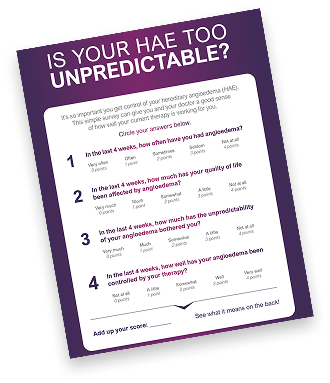The burden of HAE is unique to each patient3,6
Even patients who report that their hereditary angioedema (HAE) is well-controlled still may experience emotional and physical burdens of their disease, regularly enduring breakthrough attacks and daily trade-offs that impact their lives. Tools such as the Angioedema Control Test (AECT) can help open the door to more meaningful check-ins about each patient's unique burdens and foster a better understanding of the patient experience.6,9,10
Many patients don’t speak up about the day-to-day impact HAE has on their lives.3 Your patients may:
Restrict their physical activities1
Try to "work through" attacks1
Miss out on time with family and friends4
Feel guilty or like a burden to family members4


Track patient disease control
Since each patient with HAE may have a different definition of "well-controlled," established tools like the simple, 4-question Angioedema Control Test (AECT) may play a role in fostering deeper conversations about their disease burden and provide a measurable way to evaluate disease control.9,10
Sign up to receive updates, resources, and clinical information about HAE
